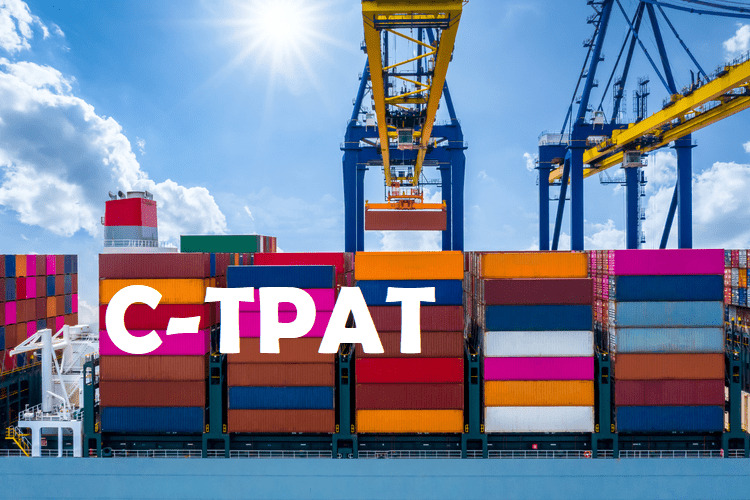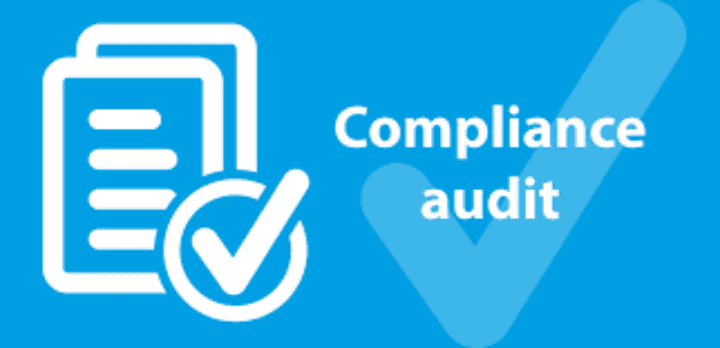Have you ever heard about C TPAT AUDIT? If yes, you can move on to other sites, but if that’s what you need to know, this article should check out until the end. Here we will let you know all the insightful details of c-tpat compliance, its requirements, and other related things. Read this article till the end and get to know the significance of C TPAT AUDIT.
What is C-TPAT?
C-TPAT is an initiative started by the United States Customs and Border Protection (CBP) for Customs-Trade Partnership Against Terrorism. It is a non-mandatory program where members work to safeguard supply chains from the protection of radical weapons, such as weapons that are used for destruction at a massive level.
This collaboration is for companies interlinked in the supply chain worldwide, such as retailers, customs brokers, terminal operators, transporters, and foreign manufacturers of the United States. Organizations that wish to be a part of C-TPAT are supposed to complete an application first.
This application is submitted to analyze the supply chain safety process against the C-TPAT criteria or instructions mutually developed by the trade community and CBP. After they are done with the completion of the online application, a U.S. Customs and Border Protection C-TPAT Supply Chain Security Specialist will get back to the participant to start the validation process.

Benefits of C-TPAT
Organizations that have supply chains that fulfill the CTPAT requirements get some inspections at the American borders. This put customs officials at ease so they could emphasize high-risk cargo. That’s the main reason; getting unloaded faster benefits your main idea. Apart from that, the U.S. Customs and Border Protection website recommends that the C TPAT certification has numerous perks:
- The lesser amount of wait times at borders.
- Front-of-the-line inspections.
- The lower number of CBP examinations.
- Assignment of a CBP supply chain security specialist to your company.
- The perk of being known as a reliable trade partner by foreign customs administrations has signed mutual recognition agreements with the United States.
- Acceptance for other U.S. government pilot programs, such as the Food and Drug Administration’s Secure Supply Chain program.
- Getting priority to initiate business after a global disaster or terrorist attack.
- Importer eligibility to take part in the Importer Self-Assessment program (ISA).
- Gaining access to the CTPAT web-based portal system and a library of helpful training materials.
- Priority consideration at CBP’s industry-focused Centers of Excellence and Expertise.
- Possible immunity from stratified exams where customs officers count every single carton to ensure that there’s a precise match with the BOL.
- Admittance to the Free and Secure Trade (FAST) rows for low-risk shipments at land borders.

What are the Eligibility Criteria for a C-TPAT an Importer?
Multiple types of business entities can have CTPAT membership, such as exporters, importers, customs brokers, carriers, third-party logistics providers, and consolidators. Suppose you are an importer and want to be eligible so you can join CTPAT; you need to come up to the level of the following criteria:
- You must be an active US importer or non-resident Canadian importer that has imported items into the US within the past 12 months.
- You must have a verified enduring import bond registered with CBP that deals with a business office staffed in the US or Canada.
- You need to have an active US importer of record (IOR) number.
- You are ready to deal with the CTPAT supply chain safety criteria outlined in the CTPAT Importer Agreement, where you will be appointed as a company officer who will be the primary cargo security officer liable for CTPAT.
- You are capable of completing a supply chain safety profile in the CTPAT portal, recognizing how it will create, maintain, and boost internal policy to follow the CTPAT importer security criteria.
- You don’t have to pay any debt owed to CBP at the time of the application for which a final decision or administrative disposition has been provided.
What are the Eligibility Criteria for a C-TPAT Exporter?
For a C-TPAT exporter, you need to come up to the level of the following criteria. Just have a look and find out:
- The exporter of C-TPAT should be an active U.S. exporter out of the U.S. with a sustainable Employer Identification Number or Dun & Bradstreet number and should have a business office that works in the U.S.
- The person should have a registered export safety program and a selected officer or manager who will act as the CTPAT program’s primary point of contact.
- The exporter should commit to dealing with the CTPAT supply chain security criteria, as defined in the CTPAT.
- The exporter should give CBP a CTPAT supply chain security profile that recognizes how the exporter will dal and boost the internal policy to fulfill the CTPAT exporter security criteria.
- As an exporter, you should have an acceptable level of adherence for export stating for the latest 12-month period and be in a good position with federal agencies including the Department of Commerce, Department of Defense, Department of the Treasury, Nuclear Regulatory Commission, Department of State, and Drug Enforcement Administration.
What is C-TPAT Compliance?
A few things need to be controlled to make sure that your business is C TPAT compliant and you have all the correct documents. For staff members, you must agree with your working organizations that contain all the background screenings, such as FBI, DMV, and export control screenings.
You should have a copy as proof that you are done with the process of screening. If you are a business partner, you must see and screen your customer database, transactional, supplier database, and service providers.
Your foreign traders must finish and submit their C TPAT questionnaire to you, find any loopholes, have a plan for modifications, and keep all such essential documents. For transporters, you must find and keep the C TPAT certificate. This will state your devotion by keeping your files, which is necessary when verifying your C TPAT status.
Importance of Compliance Audit
A compliance audit is based upon a detailed review of an organization’s loyalty to regulatory instructions. Audit reports examine the strength and detail of compliance preparations, safety policies, user access controls, and method of risk management over a compliance audit.
Two internal or external types can guide a company to identify weaknesses in regulatory compliance methods and make ways for improvement. In some cases, guidance given by a compliance audit can assist you in controlling risk while also invading possible legal trouble or federal fines for noncompliance.
Much like the laws that apply them, compliance programs are in constant variation as present regulations change, and new ones are used with every new day. Compliance auditing outlines internal business methods that can be modified or enhanced as regulations and requirements change.

Which Companies are Getting CTPAT Certified?
Following are some companies that are getting CTPAT certified. Have a look and find out which ones are they:
- Terminal operators
- Importers
- Customs brokers
- Sea carriers
- Over-the-road carriers
- Third-party logistics (3PL) organizations
- Foreign manufacturers
- Rail carriers
- Consolidators
Where to Focus while Making CTPAT Audit?
When it comes to auditing CTPAT, then there are a few areas where you need to emphasize. Check these out to know what changes you need to make to move forward in the right direction:
- Risk assessment.
- Paperwork and correct documentation.
- Shipment controls and methods.
- Fulfilling the minimum safety criteria in terms of personnel, physical capital, and technology
- Warehousing and safety management systems.
- Firm policies, processes, and documentation.
- Distribution network documentation.
Purpose of C TPAT Program
There are multiple purposes behind companies being a part of the C TPAT program. Some of the primary ones are the following:
- Having an active role in the war against terrorism.
- A controlled number of CBP inspections.
- Priority processing for CBP analysis.
- Eligibility to attend C TPAT training lectures.
- Prerequisite for participation in the importer self-assessment program.
- Penalty mitigation under particular situations.
- Given a safety consultant and a supply chain specialist.
- Tier III importers let block designation application to DHS Safety Act.
- Exporters who permit CBP to share information with other customers agencies gain controlled inspections upon arrival in certain countries.
Steps to getting C-TPAT Certificate
Below are the steps that are essential and need to be checked so you can earn the certificate:
- The initial step is to see the CTPAT Minimum Security Criteria by considering your business needs so the eligibility program.
- If you are chosen, you need to create an account and log in to the CTPAT.gov website.
- Then you’ll fill out a basic application on the CTPAT portal system and will be agreed to take part in it by choice.
- As part of your online application, you’ll then be asked to do a self-assessment. This will be a preliminary self-audit of your supply chain security methods against the CTPAT criteria.
- The next step is finishing a supply chain security profile. You need to tell how you’re meeting CTPAT’s minimum security criteria here in the security profile.
- In the end, when you are done with the online application process, U.S. Customs and Border Protection will give a CTPAT supply chain security specialist (SCSS) to your company.
How to Get a C-TPAT Certificate?
As we have mentioned above that C-TPAT is a voluntary program. A safety risk assessment is done to see what type of security risks the company is encountering. Apart from the evaluation, a supply chain safety profile should be completed. Once you are done with these steps, a C-TPAT Supply Chain Security Specialist will assist the company. It can take up to a year for certification.
How Does C-TPAT Works?
Whenever participants of the trade community sign up to be a part of C-TPAT. They can take advantage of multiple perks that make the customs clearance process more productive. More significantly, membership in C-TPAT makes the customs clearance process more accessible and safer.
When the Customs and Border Protection (CBP) knows a specific company is C-TPAT certified, they can lessen the number of analyses. Another perk contains front-of-the-line examinations.
C-TPAT Certification lets importers make the most out of faster import processing with a safe supply chain. These advantages can be given to C-TPAT certified firms because the CBP knows that the organization has invested its time and effort to make the border secure its primary preference.
Final Thoughts
With the help of this article, you would probably have understood C-TPAT meaning, what is compliance audit and what are its requirements. There is no doubt that with time more and more companies are thinking about interconnecting with C-TPAT for the sake of making the most out of their professional sphere.
If you have already applied it, then well and good. But if you are still thinking about it, it is time for you to go for it. Make the most out of the enlisted benefits as we hope that you will never regret it.
